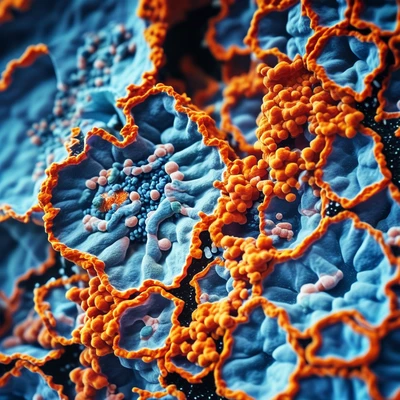A new study conducted by researchers at Columbia Mailman School of Public Health has discovered that the isotopic composition of uranium may be used as a biomarker to assess the accumulation of uranium in kidneys without invasive procedures. This research shows that uranium from contaminated drinking water can accumulate in the kidneys, even at low levels, potentially serving as an early indicator of kidney damage.
The findings published in Environmental Science & Technology suggest a significant advancement in identifying and preventing chronic kidney disease resulting from uranium exposure. This discovery sheds light on an often overlooked environmental health threat.
Environmental Science & Technology"Uranium ingested through drinking water is filtered by the kidneys, where some of it may be retained and pose harm over time," said Anirban Basu, Ph.D., senior author and research scientist at Columbia Mailman School. "Our study indicates that measuring uranium isotopes in urine could provide a sensitive and non-invasive method for detecting kidney accumulation and risk of damage."
According to federal data, nearly two-thirds of U.S. community water systems—a population of approximately 320 million—contain detectable levels of uranium. About 2% exceed the EPA's maximum contaminant level (MCL) at 30 micrograms per liter (μg/L), whereas roughly 4% of private wells—serving around 15% of the population—exceed this MCL.
While known primarily for its radioactivity, uranium's chemical toxicity, particularly to kidneys, presents more immediate concerns at environmental exposure levels. Studies demonstrate that even low concentrations (below 30 μg/L) can impair kidney function.
"Our findings highlight specific concerns for communities in the Great Plains and Colorado Plateau areas, including many Native American populations, where natural uranium deposits and historical mining activities contribute to groundwater contamination," noted Basu.
About 80% of ingested uranium is expelled through urine within days, but the remaining portion can accumulate in the kidneys—especially in the outer layer, where it adheres to cells, causes injury, and disrupts vital functions. This damage may lead to chronic kidney disease over time.
"Current methods for measuring body uranium levels do not provide information on accumulation specifically in the kidneys — a major obstacle in understanding and preventing long-term kidney damage from uranium exposure," stated Catherine Lucey, first author and doctoral student in environmental health sciences at Columbia Mailman School.
Researchers conducted experiments with mice that demonstrated uranium accumulation in both kidneys and bones following just 7 to 14 days of exposure to contaminated water. This is the first evidence that molecular uptake of uranium changes its isotopic proportions, detectable in organs and urine.
Given thaturanium's isotopic signature can be found in urine, this biomarker offers a way for affordable, non-invasive monitoring of kidney uranium levels, especially in communities at high exposure risk.
"Our results support developing new models to predict how uranium moves through the body—from ingestion to accumulation and excretion," said Lucey. "This research paves the way for precision biomarkers that could enable earlier intervention before irreversible kidney damage occurs."
The study is part of a larger effort to enhance environmental health surveillance and create tools for monitoring metal exposures in vulnerable populations. The researchers plan follow-up studies with extended exposure periods and lower uranium doses to better understand long-term effects.
Contributing co-authors include Brandon L. Pearson, Kathryn DeSantis, Ana Navas-Acien, Kathrin Schilling, Jeff Goldsmith from Columbia Mailman School of Public Health, and Alex N. Halliday from Lamont-Doherty Earth Observatory at Columbia Climate School.


